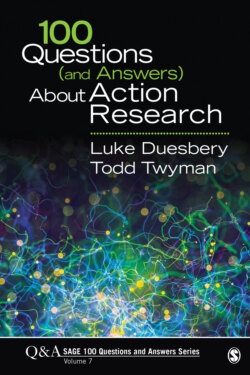Читать книгу 100 Questions (and Answers) About Action Research - Luke Duesbery - Страница 28
На сайте Литреса книга снята с продажи.
Question 18 How Does Critical Race Theory Impact Action Research?
ОглавлениеEmancipatory action research is an extension of action research. While it embraces the same participatory nature of the research, it also calls for social change as a result of the research. And so, while traditional action research has the researchers as stakeholders, emancipatory action research positions the stakeholders as agents of social change.
Unlike most academic disciplines that espouse to be free of bias merely because they are “academic,” critical race theory (CRT) takes an activist approach that seeks not only to understand racialized social structure, but to change it. It is the activist element that naturally aligns with action research. Similar to emancipatory action research, CRT assumes that institutional racism exists and through this lens examines existing power structures.
There are three commonly held tenets in CRT. First, racism is ordinary. By definition, racism is systematic and institutionalized discrimination designed to subjugate groups of people based on race (or skin color). Businesses and educational systems are run by a dominant group rooted in white male privilege, leaving racism difficult to address because skin color is often not acknowledged as an issue. It is the very nature of “color blindness” that often prevents communication and change. Second, the fundamental need to gain status through material gain leaves little incentive to address racism. Why would a white male give up power when there is no upside? Third, race is a social construction that the dominant group uses as convenient. There are several examples where this is apparent. Think of colonialism. It is convenient to refer to indigenous peoples as “savages” when natural resources are targets for national wealth. In an action research context, understanding CRT is vital to reflection and action in that its understanding can open dialogue where everyone’s voice can be heard.
More questions? See questions 17 and 21.
